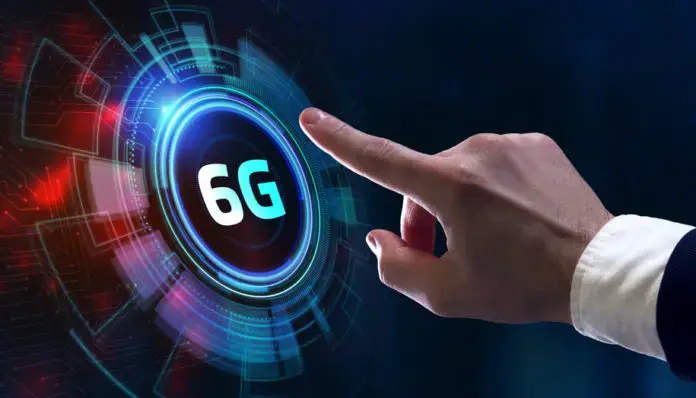Introduction: As technology advances at an unprecedented rate, excitement over the next generation of wireless communication, 6G, is already developing. While 5G took the globe by storm by promising higher speeds and lower latency, 6G is projected to push the frontiers even farther. In this post, we’ll delve into the intriguing world of 6G networks, looking at the potential breakthroughs, features, and transformational effects they could offer.
Blazing Speeds Beyond Imagination:
One of the most anticipated features of 6G is its mind-boggling speed. While 5G brought us closer to gigabit-per-second speeds, 6G is expected to take us into the terabit era. This leap in speed will not only redefine the way we experience mobile connectivity but also open up new possibilities for applications that demand unparalleled data transfer rates.
Ultra-Low Latency for Real-Time Applications:
Latency, the time it takes for data to travel from the source to the destination, is a critical factor in applications like augmented reality (AR), virtual reality (VR), and autonomous vehicles. 6G aims to achieve ultra-low latency, potentially reaching as low as one millisecond. This improvement will enable seamless, real-time interactions, making AR and VR experiences more immersive and enhancing the safety and efficiency of autonomous vehicles.
AI Integration for Intelligent Networks:
6G is expected to integrate artificial intelligence (AI) on a deeper level than ever before. This means smarter, more adaptive networks capable of understanding and responding to user behavior in real-time. AI-driven network optimization, predictive maintenance, and intelligent resource allocation are just a few examples of how this integration could revolutionize the efficiency and reliability of 6G networks.
Expanded Connectivity with TeraHertz Frequencies:
To accommodate the growing demand for connectivity, 6G is likely to explore the use of TeraHertz (THz) frequencies. These extremely high frequencies have the potential to offer unprecedented bandwidth, enabling a massive increase in the number of connected devices and paving the way for the Internet of Things (IoT) to reach its full potential.
Energy-Efficient and Sustainable Networks:
As the world becomes more conscious of energy consumption and environmental impact, 6G is expected to focus on energy efficiency. The development of sustainable, eco-friendly technologies and network architectures will likely be a priority. This not only aligns with global environmental goals but also ensures that the deployment of 6G networks is socially responsible.
Enhanced Security and Privacy Measures:
With the increasing digitization of our lives, security and privacy are paramount concerns. 6G is expected to incorporate advanced security measures, including enhanced encryption protocols and more robust authentication mechanisms. This will be crucial in safeguarding user data and ensuring a secure digital environment.
Conclusion:
In conclusion, the advent of 6G networks promises a transformative era in wireless communication. From unprecedented speeds and ultra-low latency to the integration of AI and sustainable practices, the expectations are high. As we eagerly await the rollout of 6G technology, it’s clear that the impact on how we connect, communicate, and experience the digital world will be nothing short of revolutionary. The future is exciting, and 6G is set to redefine the boundaries of what is possible in the world of wireless communication.
What is 6G, and how does it differ from the existing 5G technology?
Answer: 6G is the next generation of wireless communication technology that follows 5G. While 5G brought faster speeds and lower latency, 6G aims to push these capabilities even further, reaching terabit speeds, ultra-low latency, and introducing new features like AI integration and TeraHertz frequencies.
How will 6G impact the average consumer’s mobile experience?
Answer: 6G is expected to revolutionize the mobile experience by providing unprecedented speeds and ultra-low latency. This means faster downloads, smoother streaming, and improved real-time interactions, making activities like gaming, video calls, and augmented reality applications more seamless and immersive.
What role does artificial intelligence play in 6G networks?
Answer: Artificial intelligence is set to play a significant role in 6G networks. It will be integrated on a deeper level to enable smarter, more adaptive networks. AI will facilitate real-time network optimization, predictive maintenance, and intelligent resource allocation, enhancing the overall efficiency and reliability of 6G networks.
How will 6G contribute to the development of the Internet of Things (IoT)?
Answer: 6G is expected to contribute to the growth of the Internet of Things by exploring the use of TeraHertz frequencies. These frequencies offer massive bandwidth, allowing for a significant increase in the number of connected devices. This will pave the way for more widespread and sophisticated IoT applications, impacting areas such as smart cities, healthcare, and industrial automation.
What measures are being taken to address security and privacy concerns in 6G networks?
Answer: 6G is anticipated to incorporate advanced security measures to address evolving security and privacy concerns. This includes enhanced encryption protocols and robust authentication mechanisms to safeguard user data and ensure a secure digital environment. The focus on security aligns with the increasing importance of protecting sensitive information in our digitally connected world.


